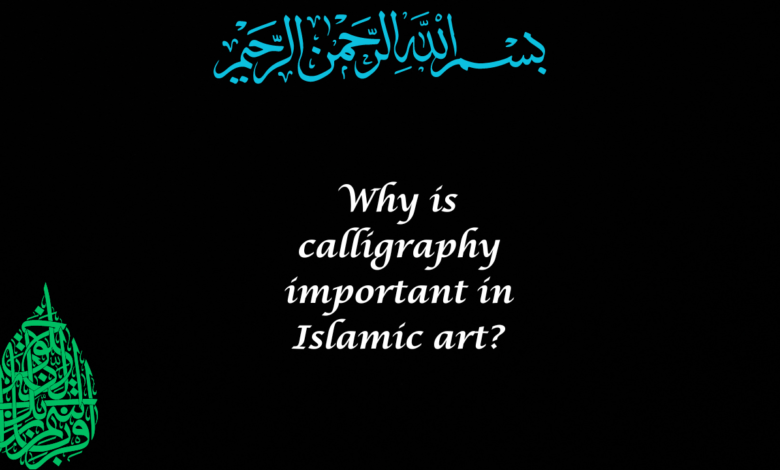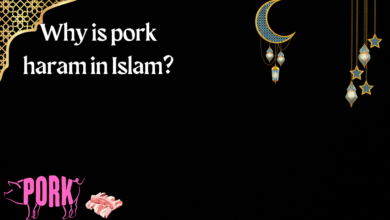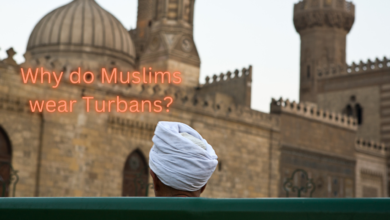Why is calligraphy important in Islamic art?

Introduction
Islamic art is a rich and diverse tradition that encompasses a wide range of artistic expressions, from intricate geometric patterns to vibrant ceramic tiles and breathtaking architectural marvels. However, one of the most distinctive and revered elements of Islamic art is calligraphy. Calligraphy holds a unique place in Islamic artistic heritage, serving as a bridge between the secular and the divine, and reflecting the spiritual essence of Islam in its visual form. This article explores why calligraphy is so important in Islamic art and how it has become a vehicle for conveying both religious messages and artistic beauty.
The Art of Writing
Calligraphy, derived from the Greek words “kallos” (beauty) and “graphein” (to write), is the art of beautiful writing. In Islamic tradition, calligraphy is elevated to a sacred form of artistic expression, reflecting the belief that the written word is a manifestation of the divine. The Quran, the holy book of Islam, emphasizes the importance of the spoken and written word, as it was through divine revelation that the Quran itself was conveyed to humanity. This deep reverence for language and communication forms the basis for the role of calligraphy in Islamic art.
The Visual Representation of the Divine Word
In Islamic calligraphy, the words of the Quran take on a visual dimension that extends beyond mere text. Calligraphers use various scripts to transform verses from the Quran into intricate and harmonious compositions. Each script carries its own aesthetic and historical significance, providing a diverse range of visual expressions. From the angular and bold Kufic script to the flowing and intricate Thuluth script, calligraphy offers a unique visual interpretation of the divine word, capturing the essence of the message in both form and content.
The Unity of Word and Art
Islamic calligraphy embodies the concept of unity, where the spiritual and artistic realms intersect seamlessly. The words of the Quran are treated with the utmost respect, and this reverence is translated into the art of calligraphy. As the Quran’s verses are transformed into art forms, calligraphers ensure that the meaning and essence of the words remain intact. The process of creating calligraphy involves meticulous attention to detail, precision, and dedication, reflecting the spiritual devotion of the calligrapher. This unity of word and art serves as a reminder of the interconnectedness of the material and the spiritual worlds in Islam.
Preserving Tradition and Innovation
While rooted in tradition, Islamic calligraphy also embraces innovation. Throughout history, calligraphers have pushed the boundaries of their craft, experimenting with new techniques, styles, and materials. This spirit of innovation ensures that calligraphy remains relevant and captivating to contemporary audiences while upholding the legacy of the past. The harmonious coexistence of tradition and innovation in calligraphy is a testament to the dynamic nature of Islamic art.
Cultural and Geographical Diversity
Islamic art spans across a vast geographical area and diverse cultures. This diversity is beautifully reflected in the myriad styles of calligraphy that have emerged from different regions. Whether it’s the refined Naskh script of the Ottoman Empire, the bold Maghrebi script of North Africa, or the ornate Diwani script of Persia, each style embodies the cultural and artistic influences of its respective region. Calligraphy thus becomes a cultural ambassador, carrying the distinct identity of each Islamic civilization.
Conclusion
Islamic calligraphy stands as a testament to the profound connection between the written word and artistic expression. It encapsulates the beauty, devotion, and spiritual significance of Islam, making it an integral part of Islamic art. Through its intricate compositions, diverse scripts, and harmonious fusion of tradition and innovation, calligraphy continues to inspire awe and admiration, serving as a timeless bridge between the secular and the divine within Islamic artistic heritage.
FAQs about the Importance of Calligraphy in Islamic Art
What is Islamic calligraphy?
Islamic calligraphy is the art of beautiful writing, characterized by intricate designs of letters and words. It holds a significant place in Islamic art and culture, serving as a means to express religious and artistic values.
Why is calligraphy important in Islamic art?
Calligraphy is considered a central element of Islamic art due to its role in preserving and conveying the sacred texts of Islam. It is also a reflection of the importance of language and communication in the Islamic faith.
What role does calligraphy play in Islamic culture?
Calligraphy in Islamic culture is more than just a decorative element; it is a form of spiritual expression. It is used to inscribe verses from the Quran and Hadith (sayings of Prophet Muhammad), creating a connection between the divine word and visual art.
How does calligraphy reflect Islamic beliefs?
Islamic calligraphy embodies the reverence Muslims hold for the Quran, which is believed to be the word of God. The art form showcases the devotion, discipline, and precision that are integral to practicing the faith.
What are the different styles of Islamic calligraphy?
Islamic calligraphy has various script styles, such as Naskh, Thuluth, Diwani, and Kufic, each with its unique characteristics. These styles have evolved over centuries and are used for different purposes, ranging from religious manuscripts to architectural ornamentation.
How is calligraphy integrated into Islamic architecture?
Islamic architecture often features calligraphic inscriptions on mosque walls, domes, and arches. These inscriptions not only enhance the aesthetics of the buildings but also reinforce their spiritual significance.






